

Tesla offers a more in-depth service menu for the DIY mechanic. You can use this to get more details about issues, assist with diagnostics, do calibrations, and perform other tasks without additional software such as Toolbox 3. Service mode is intended for those who understand what they are doing. Service mode is available in all Tesla vehicles including the Model S, Model X, Model 3, Model Y, and Cybertruck. Options depend on the model, features, and vintage. (Feb-2024 update)
To access the secondary service menu, select Controls -> Software. Press and hold the larger text “Model” for 5 seconds and then release.
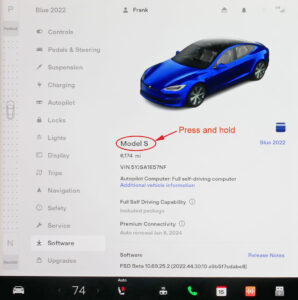
A dialog “Please enter access code” will appear.
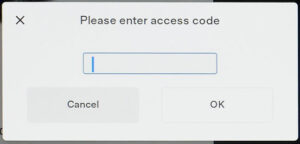
Type service (all lowercase) and press OK. A Service Mode warning dialog appears.
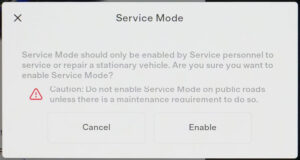
Select Enable. After a couple of seconds, Service Mode is activated.
Use the icons on the left of the Service mode screen to select different options. Some icons have multiple sub-options, which appear when you tap on one of the icons. You can swipe down from the top to hide the service menu. Tap the red wrench icon to bring back the service menu.
At the bottom of the center navigation bar, tap the red “Exit Service Mode”, followed by press and hold for about 5 seconds.
On many screens, you’ll see different areas in bright green. Many of these areas can be tapped to get additional status. In some cases, it opens up buttons for calibration or additional tests.
Vehicle Info mode shows some basic details of your car with six function buttons on the right, and a list of areas below the Vehicle Info tab.
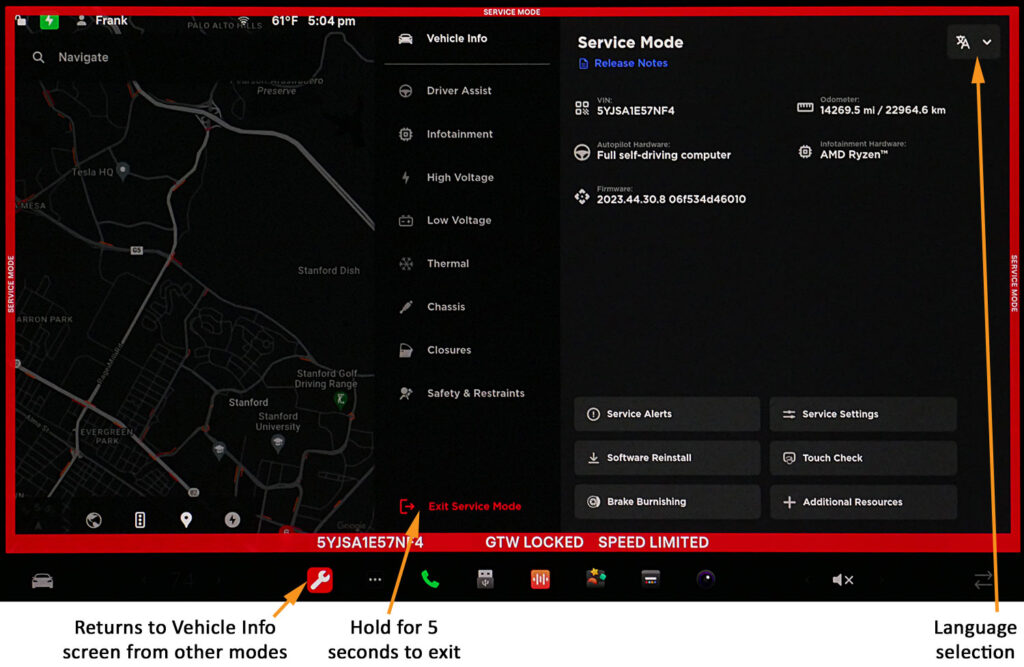
Tap Service Alerts to view service alerts and when they occurred. There are two categories, Service-Fix and Customer. Service-Fix can include important issues along with non-issues. It is common to see a few issues here that are unimportant. Customer alerts are those that are shown on the display in normal vehicle operation. Click on an alert for additional details as we did in our example below.
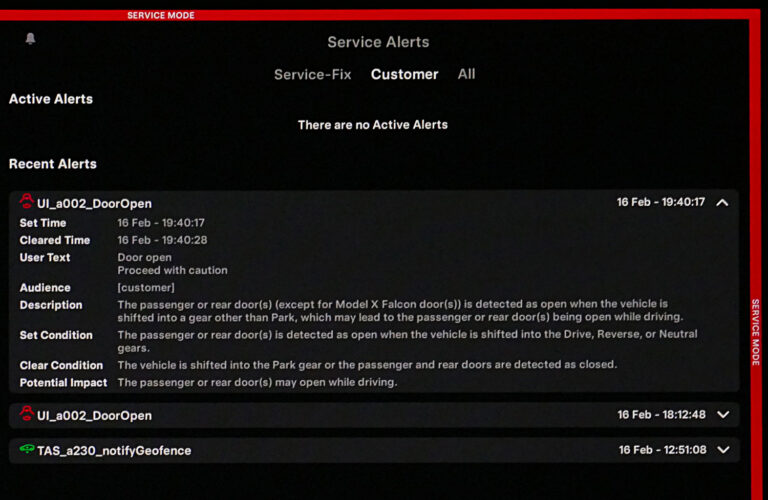
Some of the common unimportant error messages you may see in older vehicles:
Toolbox can be used to resync the aero shutters, but we understand it is not necessary and Tesla service will not do it normally.
Use this function to reinstall the software. It will not install a newer or older version than the current one. This is used when some ECUs are replaced. It is not to be used for car computer replacements.
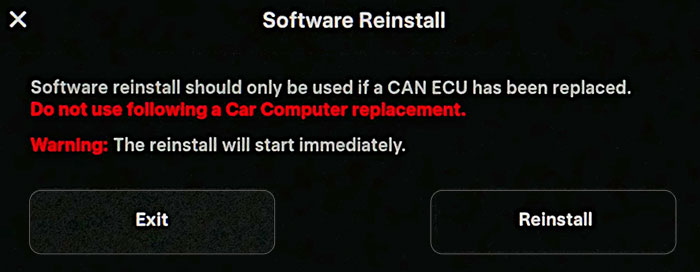
When brake pads or rotors are replaced, it is necessary to smooth the brake pads to the rotors. This service menu guides you through the process and disables regen to perform the brake burnishing.
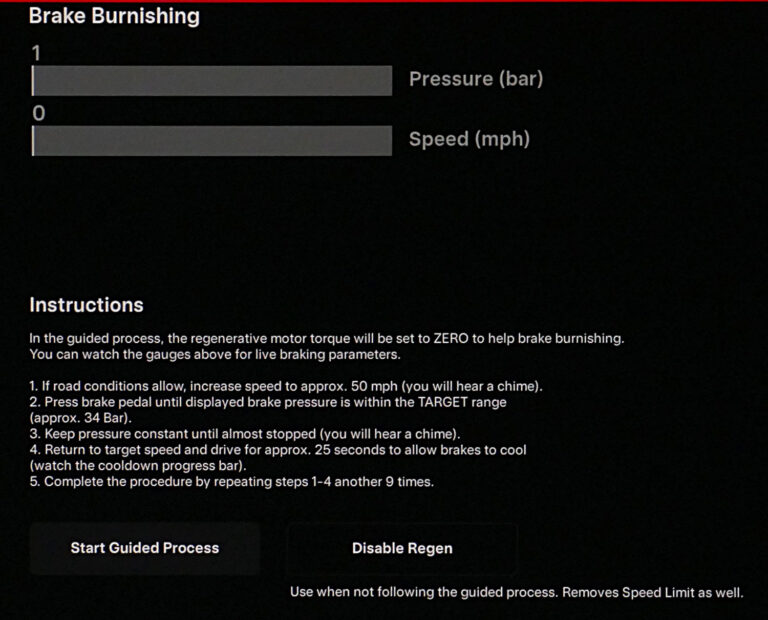
This is a long list of various settings that are normally limited or disabled while in service mode. You can override these settings if you are working on one specific area that is needed. The list can be scrolled to see additional settings.
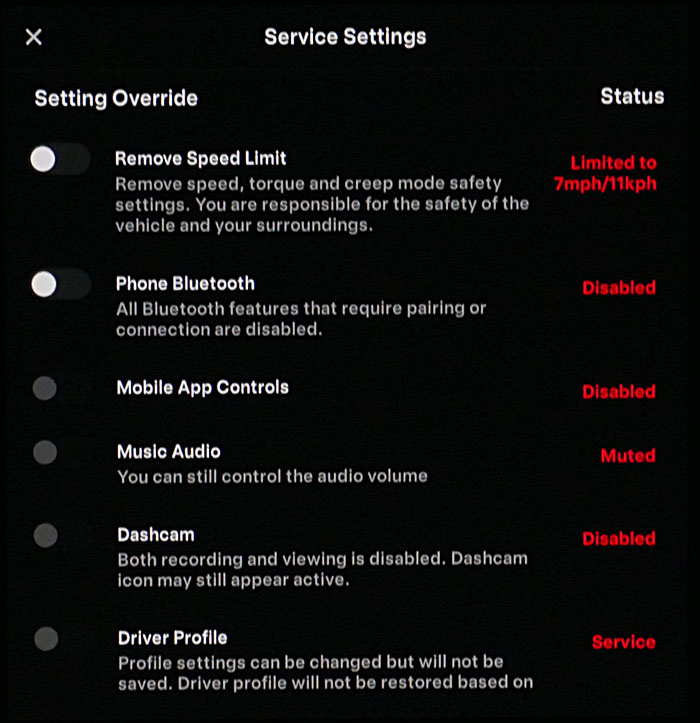
This is used if the touch panel is damaged and creating fake touch events. Such events will be shown on the display with a small red X. Touch any area to also show a small red X to confirm it is working.

Just a text dialog on getting additional service and technical information from Tesla.
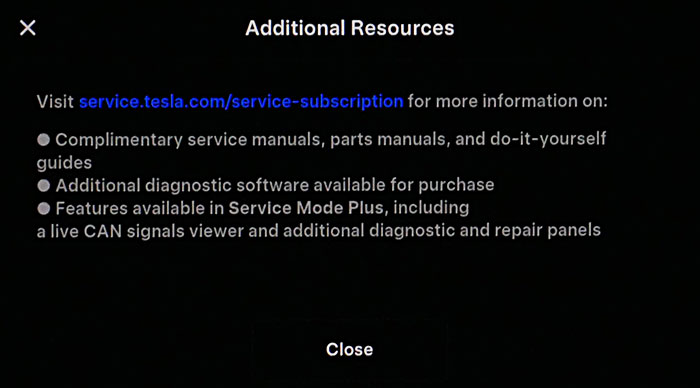
Release notes for service mode (not the customer software release notes). Select a software release on the left. Scroll down to see all of the changes for a release.
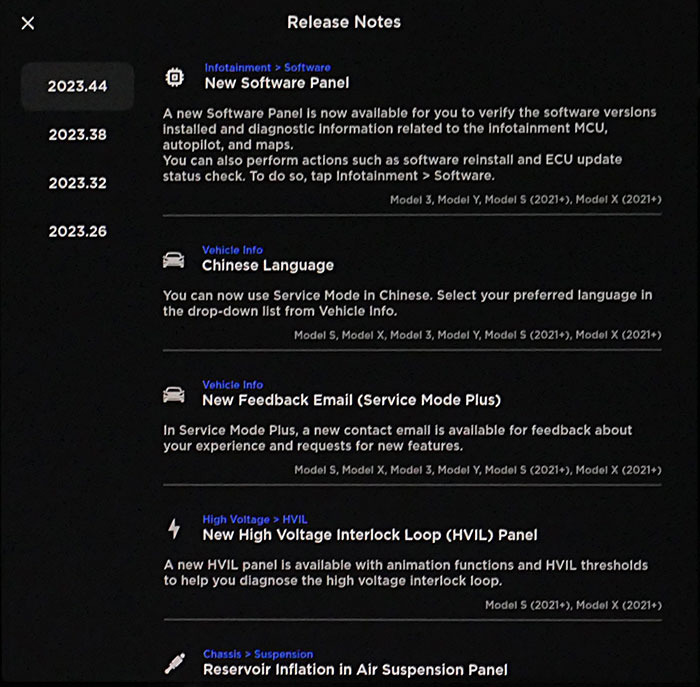
There are two sections for Driver Assist: Cameras and Sensors.
You can check the Cameras status for the DAS (Driver Assist System). A green dots indicates the camera is functioning normally. You can preview each camera and calibrate the front cameras.
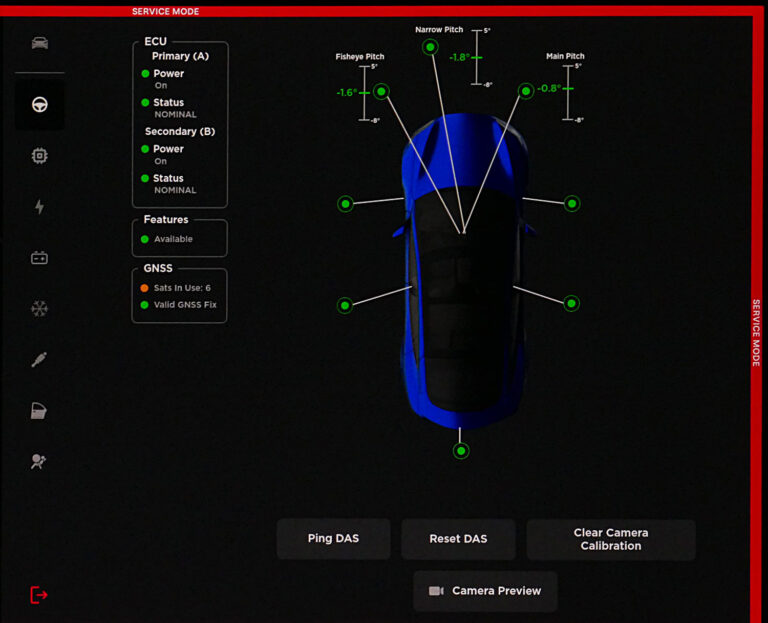
Depending on what hardware your vehicle is equipped with, the Sensors selection shows radar, ultrasonic sensors, ECU and the GPS status and number of GPS satellites in use. You can calibrate the ultrasonic sensors as well (if equipped).
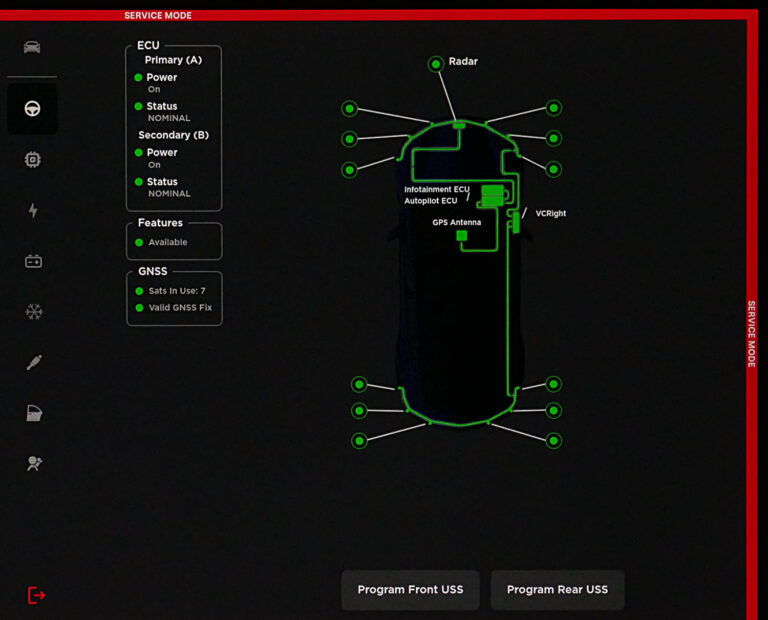
There are three sections under Infotainment: Connectivity, Software, and ECU Update Status.
The Connectivity section shows the state of WiFi and Cellular.
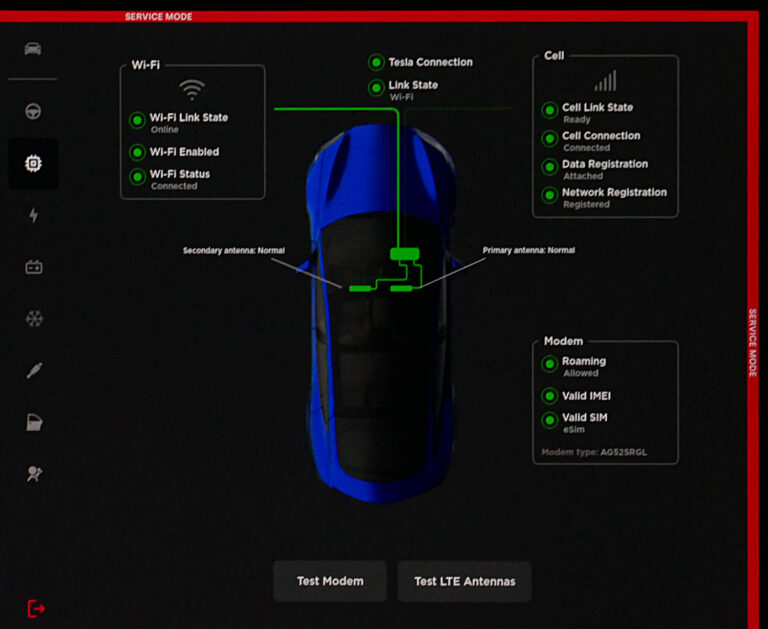
The Software section shows the memory Bank A and Bank B for the three major software sections, Infotainment, Autopilot, and the Maps. New installs are loaded into the unused bank and then the current Bank is switched to the new installed memory Bank.
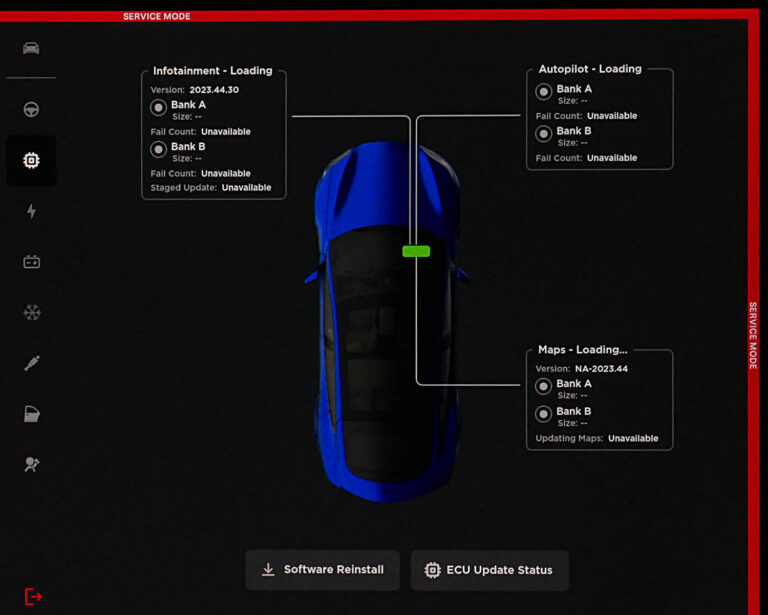
The ECU Update Status section shows which ECUs (Electronic Control Units) were last updated. This will be different for each software update.

There are four sections under High Voltage: Charging, HV System, HV Battery, and HVIL.
The Charging system shows the type and status of charging and charge port details.
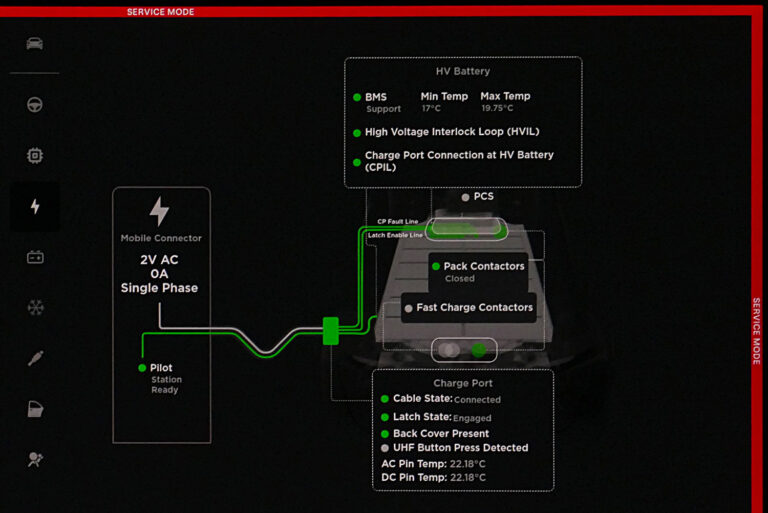
The HV System shows shows the high-voltage systems that are functioning properly. It also shows the internal and external Isolation resistance, normally above 2000 kΩ. Low resistance indicates a leakage path, which could be caused by a fluid leak in the battery, drive unit or HVAC compressor.
On newer cars (2021+?) there is a battery health test option. It requires the car to have a SOC below 50% to start and be connected to a Level 2 charger. The test takes a little under 24 hours to run.
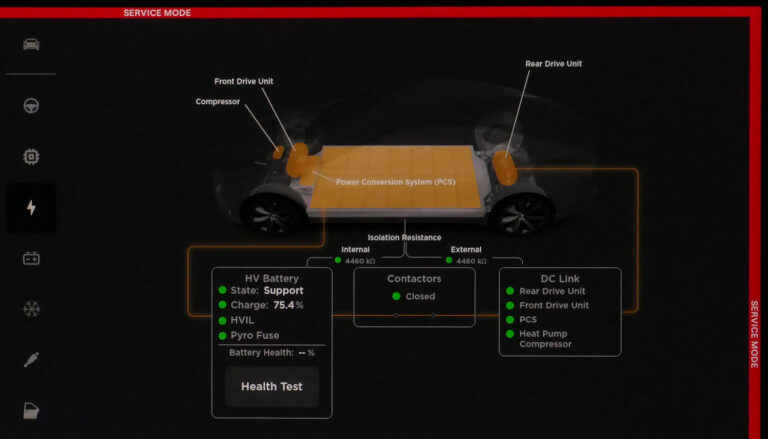
The HV Battery shows shows the high-voltage battery components. Tap on a green area to get additional details. It also includes options for setting a low SOC (State of Charge) for factory shipping.
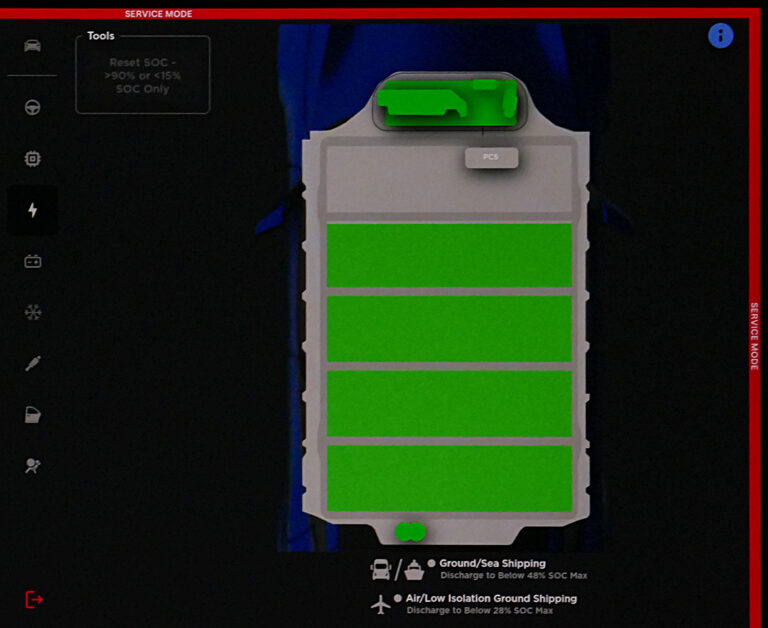
The HVIL shows shows path and status of the High Voltage Interlock Loop. Should any loop be broken or disconnected, the high voltage will not be energized by the contactors.
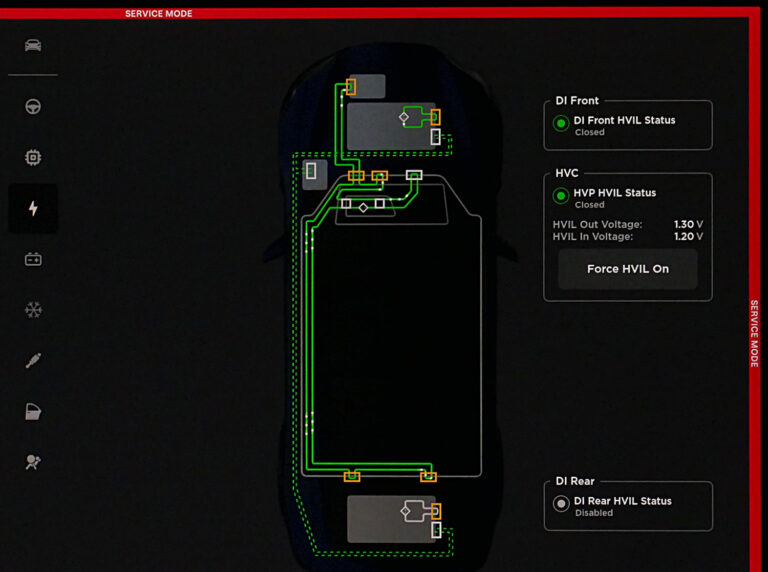
The Low Voltage selection offers two choices: Power Distribution and HomeLink.
Power Distribution to view status and options to reset some of the vehicles computers.
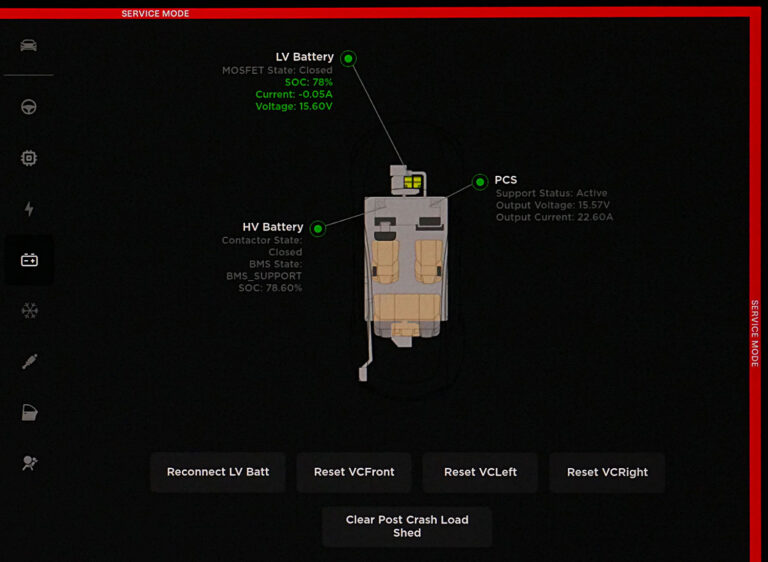
The second option HomeLink is used to check the status, retrofit and test HomeLink.
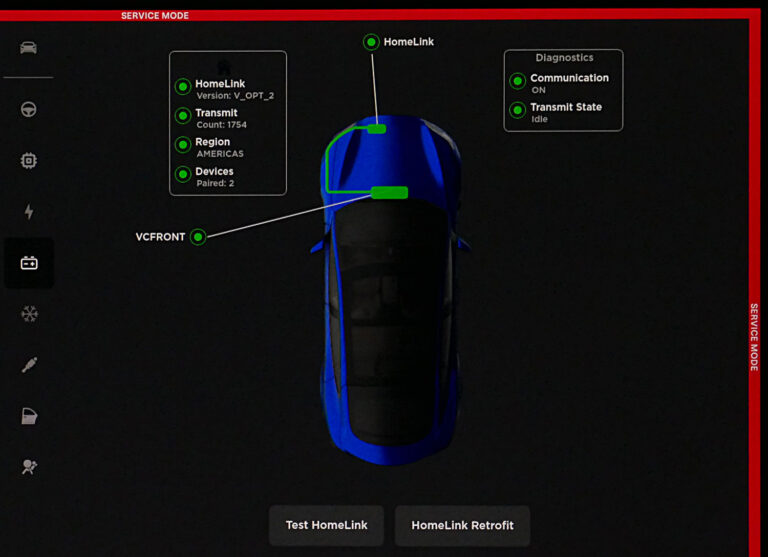
The Thermal section has four choices: Actions, Refrigerant System, Coolant System, and HVAC. Do not use options in this section unless you know what you are doing! The default in Service Mode is to have the HVAC system off. Go into Service Settings if you need the heat pump operating to check the status and operation.
Actions shows the system status and has several tests.
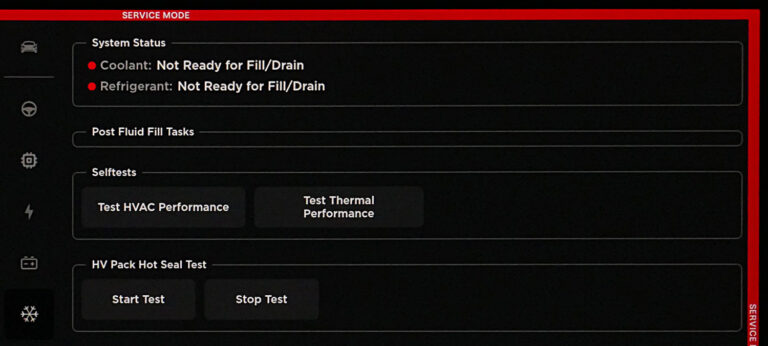
Refrigerant System shows the fluid flow, pumps, fans and temperatures.
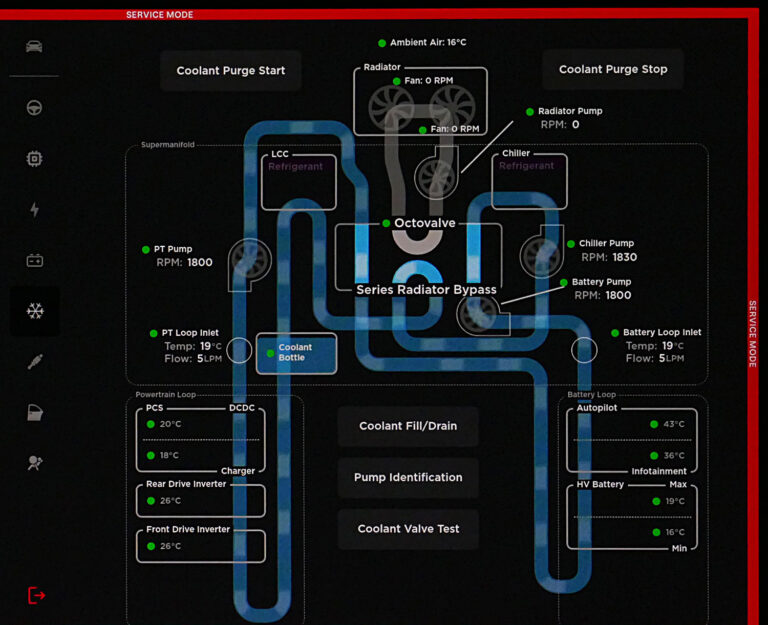
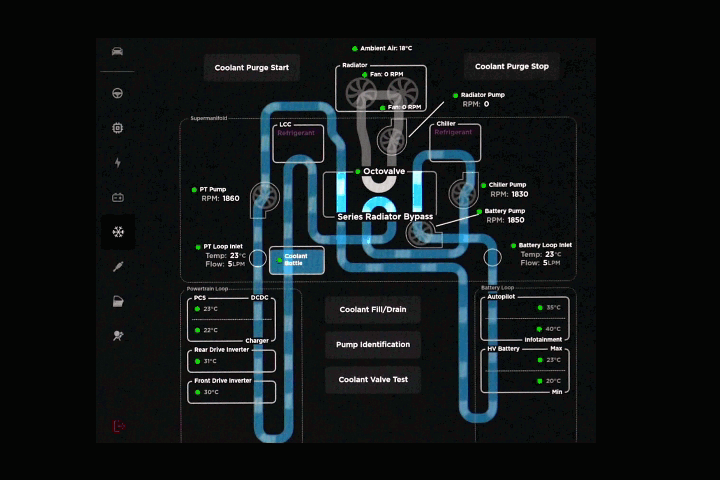
Animation when operating09
Coolant System shows an animated flow of refrigerant with options used to fill the refrigerant system.
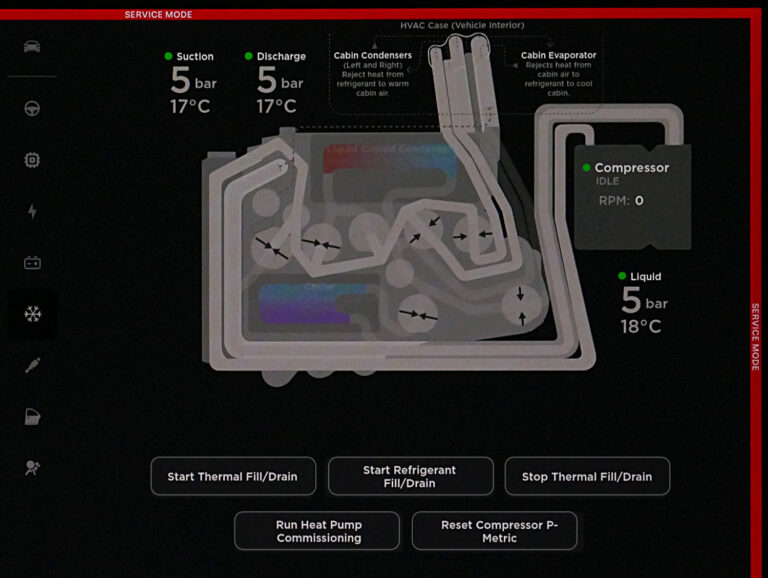
HVAC shows the cabin airflow and temperatures. Depending on the model, there can be up to three sections, Left, Top and Right.
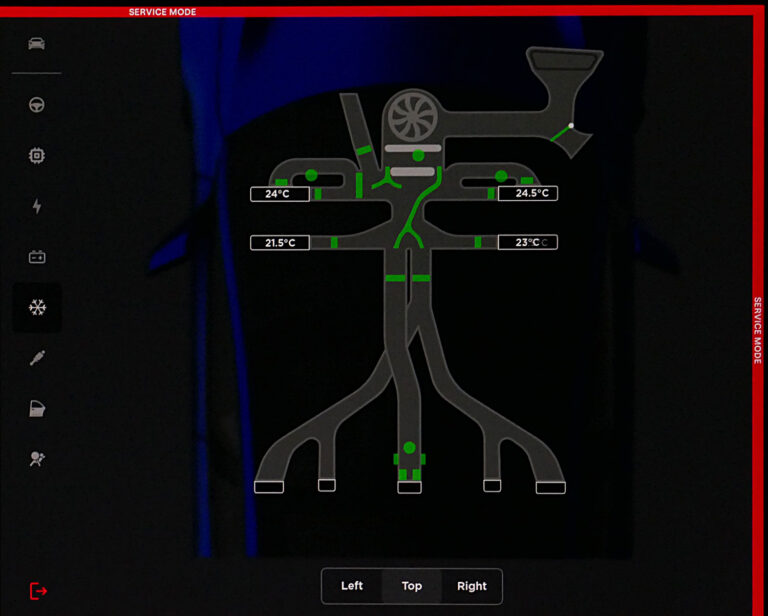
The Chassis section has five sections depending on the vehicle: Suspension, Alignment & Tires, Steering, SCCM, and Brakes.
Suspension shows the height of each corner and provides several service options for vehicles equipped with air suspension.
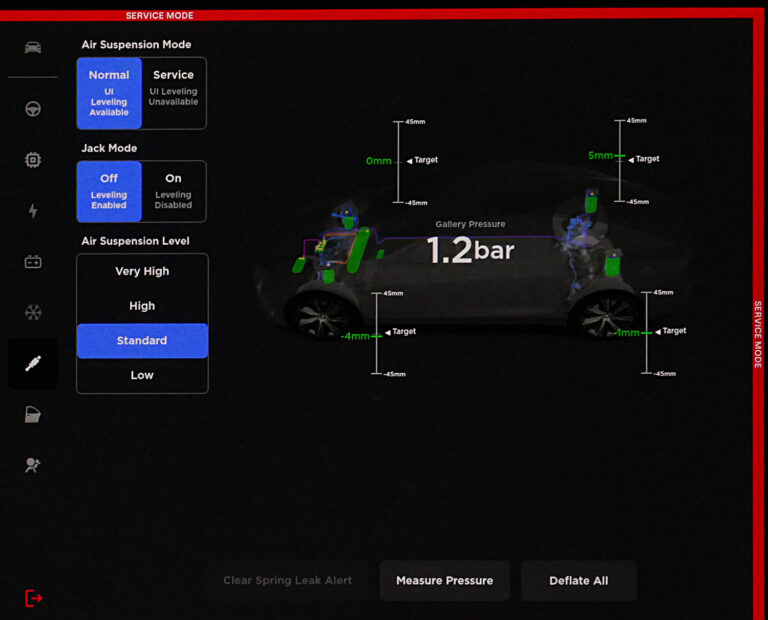
Alignment and Tires allows you to view the current steering wheel position (with the center green circle). The steering wheel applied offset is self-learning.
On the right, you can view the raw tire pressures in PSI (when transmitting). In this image the vehicle was stopped, so no tire pressures are seen. Tire sensors only send values when pressures change or when the vehicle is moving.
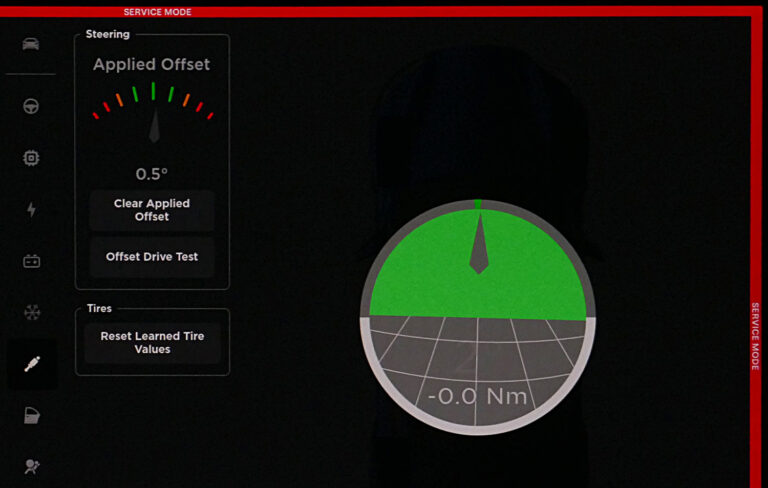
Below is a screen from an older Service Mode version in 2023 showing Tire Pressures
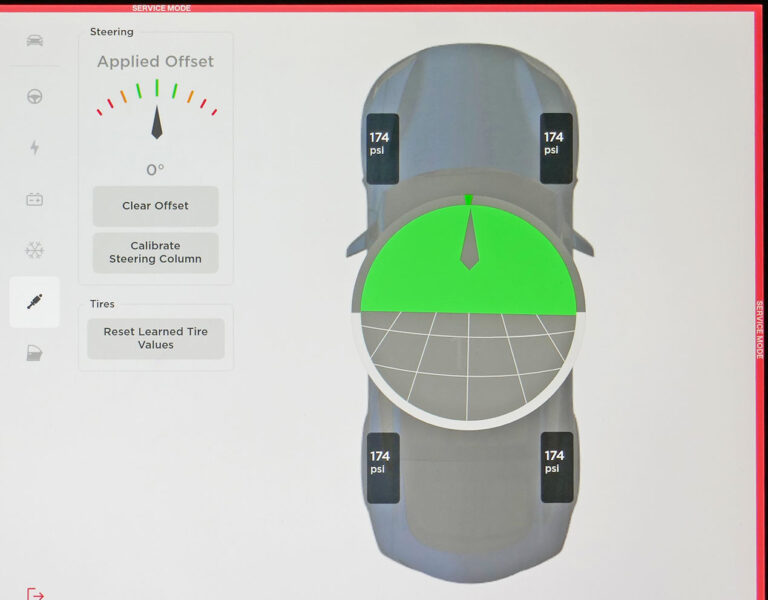
Steering -allows calibration of the steering column.
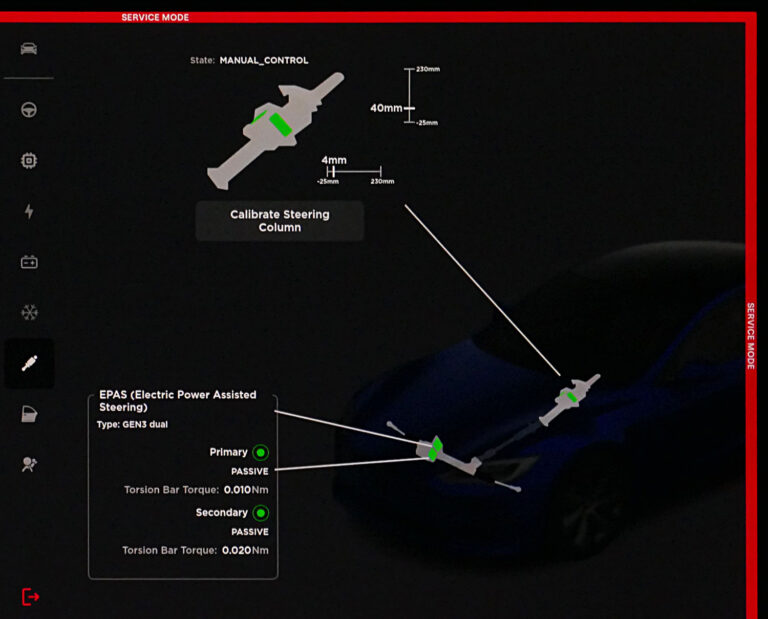
SCCM -Steering Column Control Module allows setting the type of steering wheel, when more than one option is available. You can also test all the buttons and scroll wheels. Press and hold a steering button (at least 2 seconds) and the corresponding icon will change to amber.
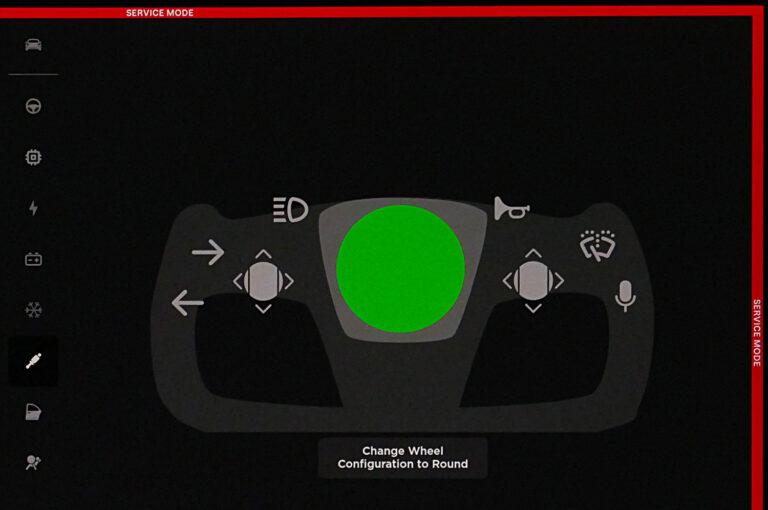
Brakes -shows the braking system including the master cylinder pressure and status of the brake switch. Several tests and service items are controlled from this dialog.
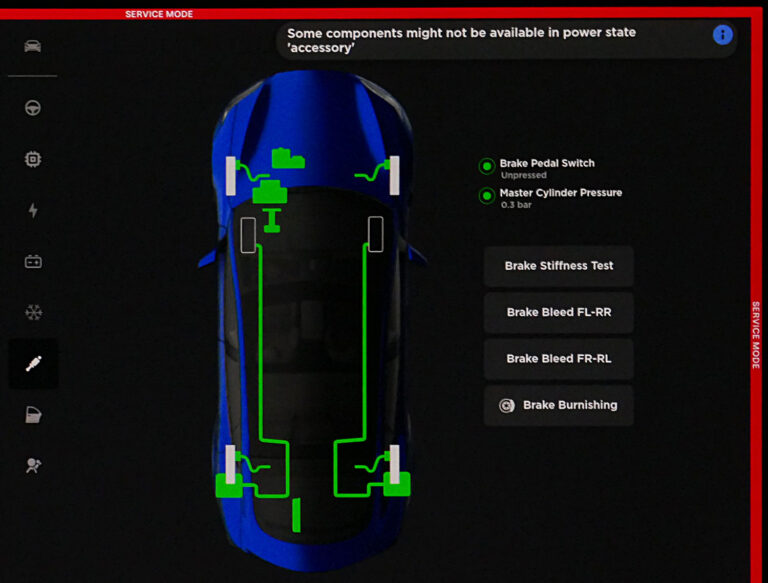
Closures has two sections: Windows and Door Handles.
Windows shows each windows state, calibrations state, ability to calibrate and the option for Wiper replacement.
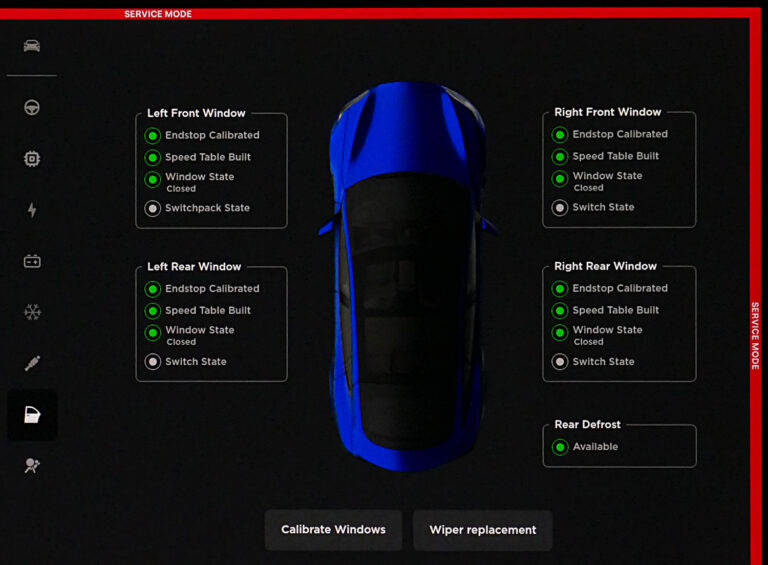
Door Handles shows each handle version and the option to calibrate each handle.
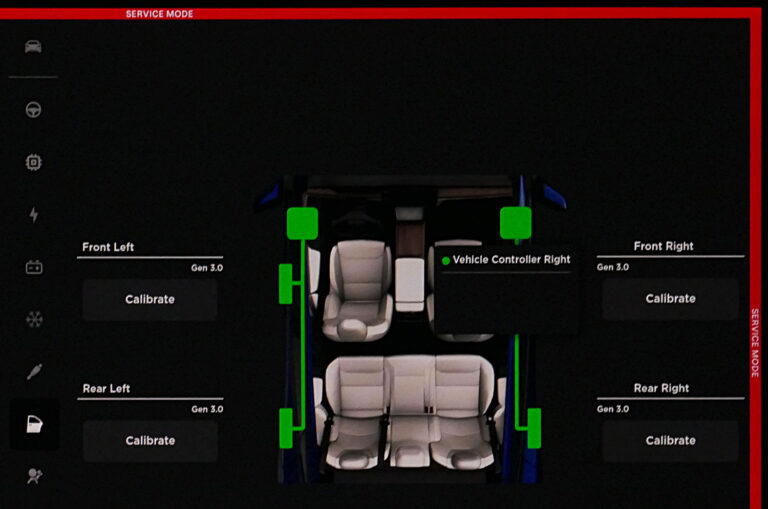
Safety and Restraints has two sections: Airbags and Seats.
Airbags shows the airbags in the vehicle. Tap on a green item for status. RCM is the Restraints Control Module.
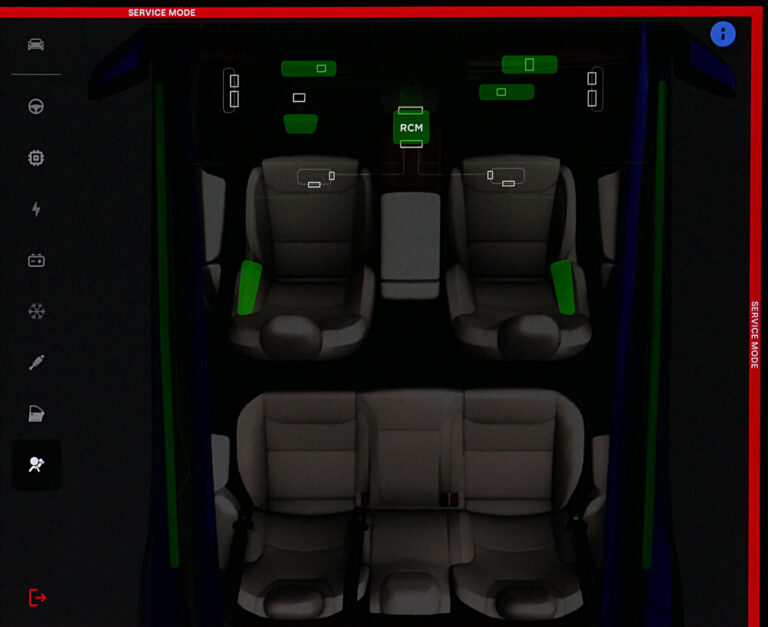
Seats shows each seat heater, seatbelt status and seat motors. Tap on a green item to get more information and status.
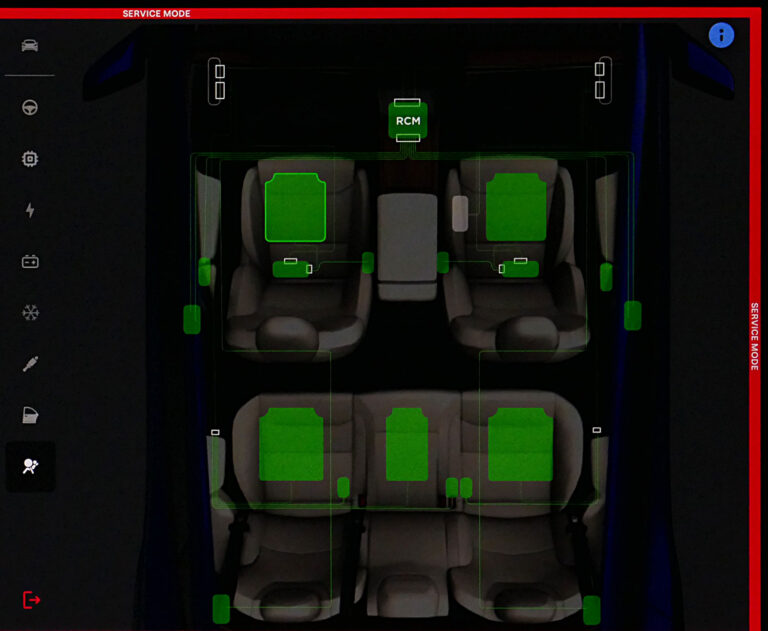
Tests and screenshots were taken in February 2024 using: